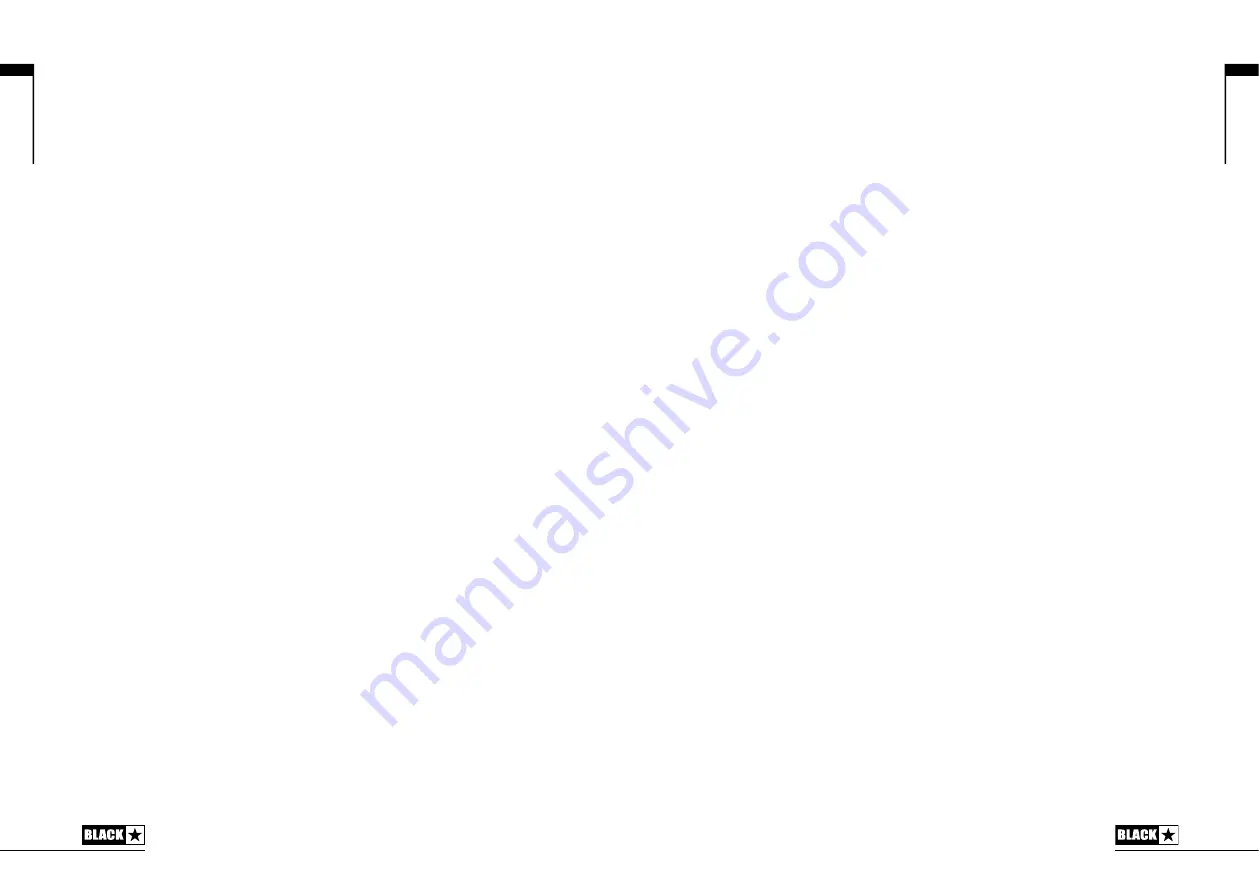
14
English
English
13
23. MP3 / Line In
Play audio from any device with a 3.5mm output (e.g. a phone, MP3 player, tablet,
laptop etc.) through your Unity Elite amplifier using a 3.5mm (1/8") AUX cable (sold
separately). Adjust the volume on your playback device to match that of your bass
guitar to enable you to play along. The volume to the external speaker(s) is controlled
by the Master Volume knob (16). The MP3/Line In signal is also mixed to the ¼"
Headphones output (25) but is not mixed to the XLR Line Output.
24. Line Out (USB)
This Mini-B-type USB socket is for connection to a computer via a suitable cable
(not supplied). It is capable of multiple simultaneous inputs and outputs. Standard
audio drivers are used to connect the amplifier to a PC, Mac or other applicable
recording device. No specific drivers are required. For a guide on low latency USB
recording visit: www.blackstaramps.com/usbrecording
NOTE:
Always connect the amplifier via a main USB port, often found on the rear
of the computer.
The amplifier will appear as an audio capture device within recording software. The
audio output via USB from your amplifier directly to your computer is carried across
four independent, simultaneous channels:
Channel 1:
Stereo emulated, left channel – The fully processed bass sound, with
speaker cabinet emulation. This will include the left channel of the internal stereo
chorus.
Channel 2:
Stereo emulated, right channel – The fully processed bass sound, with
speaker cabinet emulation. This will include the right channel of the internal stereo
chorus.
Channel 3:
Preamp output – The preamp sound of the Voices and EQ stage,
without any speaker cabinet emulation. Ideal for use with your own effects and
cabinet emulation plugins within your recording software/DAW.
Channel 4:
Unprocessed dry D.I. signal – This is the direct signal from your bass
guitar as received by the amplifier. Record this signal for later use during Reamping
(see Reamping section below).
These audio streams can be recorded simultaneously within your chosen recording
software/DAW.
TIP:
To record a true stereo chorus affected sound, pan the stereo emulated left
channel 100% left in the mix and pan the right channel 100% right.
Your Unity Pro Bass amplifier can also receive audio input from your computer:
Channel 1:
Line input, left channel – Used for audio monitoring or backing track
playback via the speaker(s) and Line Outputs.
Channel 2:
Line input, right channel – Used for audio monitoring or backing track
playback via the speaker(s) and Line Outputs.
Channel 3:
Reamping input – Send a pre-recorded unprocessed bass signal to your
amplifier for Reamping, when in Reamping mode (see Reamping section below).
Channel 4:
Unused.
Reamping
When activated, Reamping Mode allows your Unity Elite amplifier to accept a pre-
recorded, dry D.I. signal via USB and this at the input stage. The preamp and effects
settings can then be adjusted as required and the return signal can be re-captured
using recording software on a connected PC or Mac. Reamping is a very useful
recording tool where your desired tone can be chosen after the recorded part has
been captured, allowing you to experiment with different sounds and effects without
worrying about needing to repeat the perfect take.
Reamping Mode is automatically activated when a USB connection is present
and there is NO connection in the instrument input socket (1). Reamping Mode is
automatically exited if a cable is connected to the amplifier’s instrument input.
Reamping Example
Set up two instrument tracks in a session within your chosen recording software.
Assign one of the tracks to USB inputs 1+2 (stereo emulated Line Output from your
amplifier) and the other to USB input 4 (unprocessed dry D.I. from your amplifier).
It is advised to always record USB input 4 alongside any fully processed audio
from the other USB inputs, just in case you wish to adjust the tone of the recording
after the take. To do this, simply unplug the instrument cable from your amplifier’s
input and play back the pre-recorded unprocessed D.I. signal from your recording
software to USB output 3 (the amplifier’s Reamping input). Playback of this track
will then be heard through your amplifier’s speaker(s) and Line Outputs, and the
tone can be adjusted as normal using the controls on the top and rear of your
amplifier. Once your desired tone has been found simply restart the playback of the
unprocessed D.I. signal via your recording software and simultaneously record the
stereo emulated audio returned from your amplifier from USB inputs 1+2.
25. Headphones
A stereo ¼" output for connecting your headphones for monitoring or silent practice.
The output signal is defined by the position of the Line Out Level knob (26) and Em.
Out/D.I. switch (27). The Chorus effect is stereo to this output when the Emulated
Output is selected. Set the Master Volume knob (16) to zero for silent practice.
26. Line Out Level
This control can cut or boost the signal level sent to all Line Outputs. This knob
affects the USB audio (24), Headphone (25) and XLR (28) Line outputs, but not the
external speaker volume.
27. Emulated Output / D.I.
This switch affects which audio signal is sent to the Headphone (25) and XLR (28)
Line Outputs:
Emulated Output (switch OUT) – full preamp signal of Gain, Drive, EQ and
effects will be sent to the Line Outputs. Emulates the tonal characteristics of a
bass speaker cabinet and provides a natural tone for direct recording.
D.I. (switch IN) – the direct signal from your bass guitar as received by the
amplifier, taken after the input Gain knob (4) and Pad switch (3).
Содержание Unity U700H Elite
Страница 32: ...64 63 64 63 Japanese Japanese ...








































